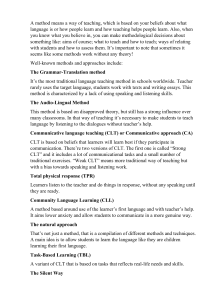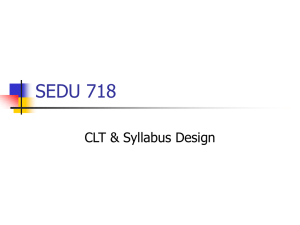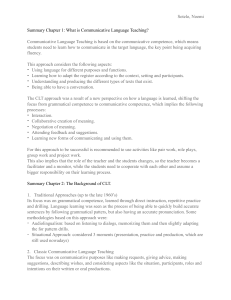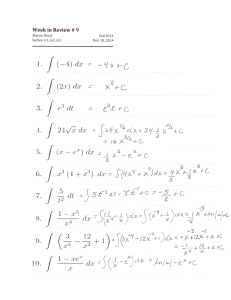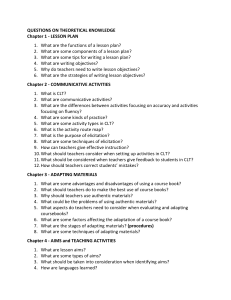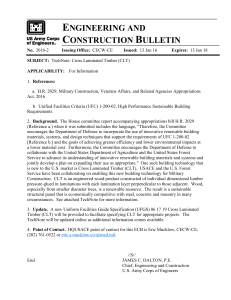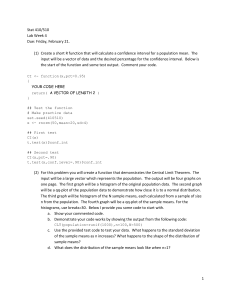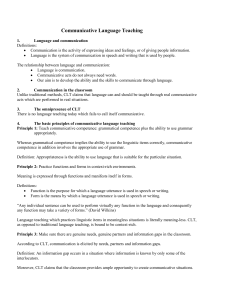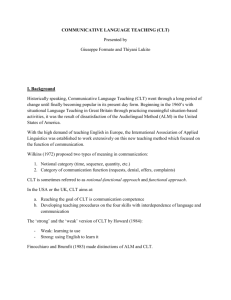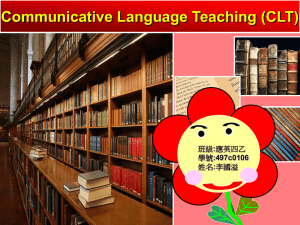Conclusions on Communicative Language Teaching taken
advertisement
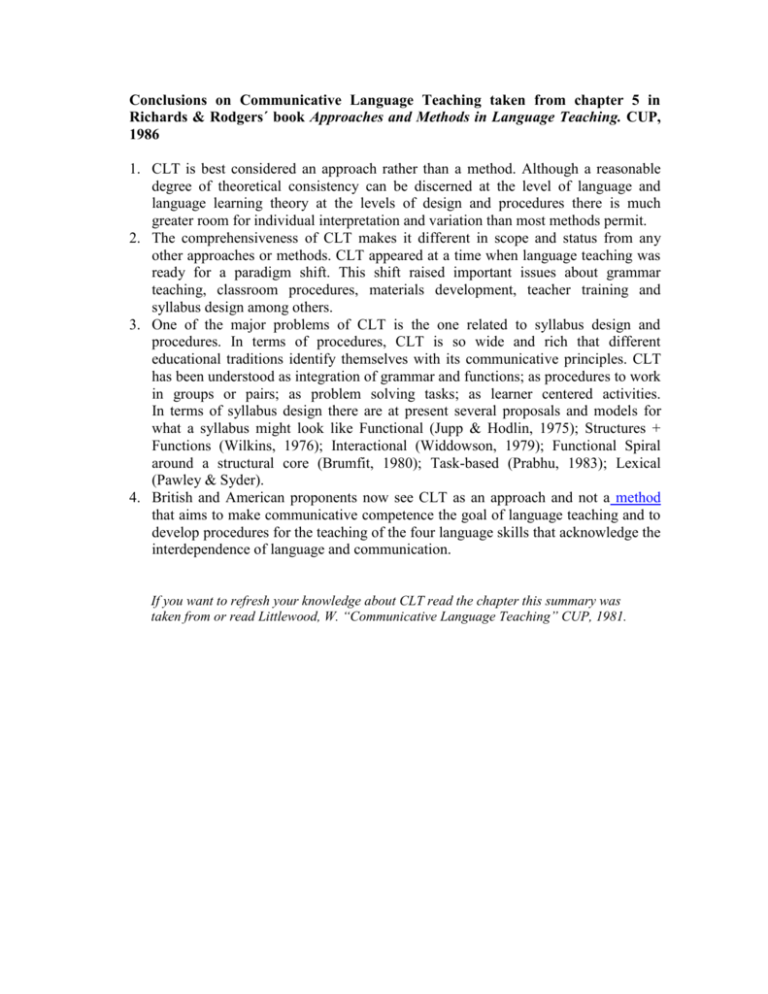
Conclusions on Communicative Language Teaching taken from chapter 5 in Richards & Rodgers´ book Approaches and Methods in Language Teaching. CUP, 1986 1. CLT is best considered an approach rather than a method. Although a reasonable degree of theoretical consistency can be discerned at the level of language and language learning theory at the levels of design and procedures there is much greater room for individual interpretation and variation than most methods permit. 2. The comprehensiveness of CLT makes it different in scope and status from any other approaches or methods. CLT appeared at a time when language teaching was ready for a paradigm shift. This shift raised important issues about grammar teaching, classroom procedures, materials development, teacher training and syllabus design among others. 3. One of the major problems of CLT is the one related to syllabus design and procedures. In terms of procedures, CLT is so wide and rich that different educational traditions identify themselves with its communicative principles. CLT has been understood as integration of grammar and functions; as procedures to work in groups or pairs; as problem solving tasks; as learner centered activities. In terms of syllabus design there are at present several proposals and models for what a syllabus might look like Functional (Jupp & Hodlin, 1975); Structures + Functions (Wilkins, 1976); Interactional (Widdowson, 1979); Functional Spiral around a structural core (Brumfit, 1980); Task-based (Prabhu, 1983); Lexical (Pawley & Syder). 4. British and American proponents now see CLT as an approach and not a method that aims to make communicative competence the goal of language teaching and to develop procedures for the teaching of the four language skills that acknowledge the interdependence of language and communication. If you want to refresh your knowledge about CLT read the chapter this summary was taken from or read Littlewood, W. “Communicative Language Teaching” CUP, 1981.

